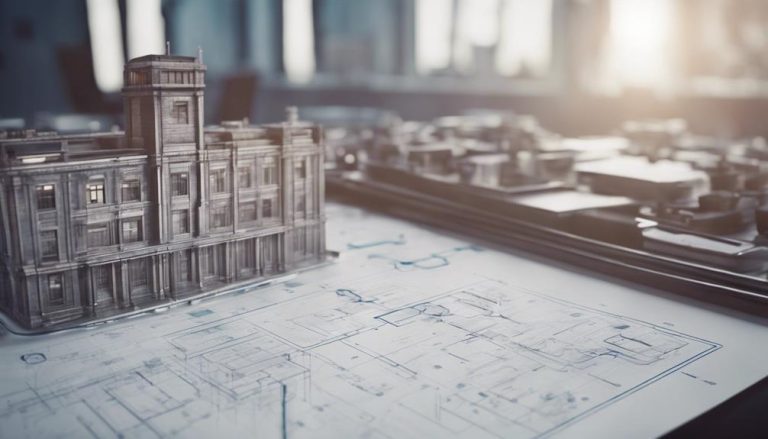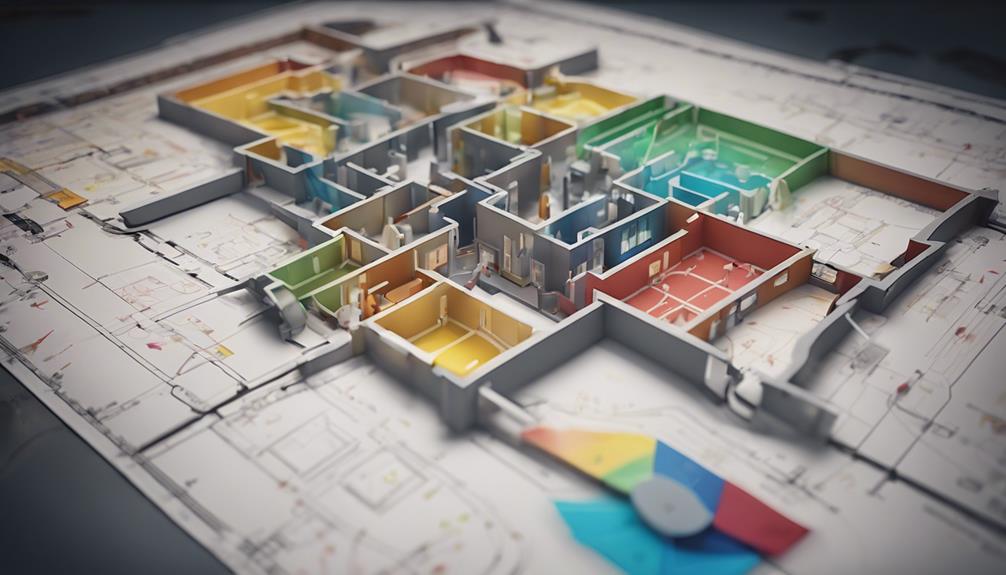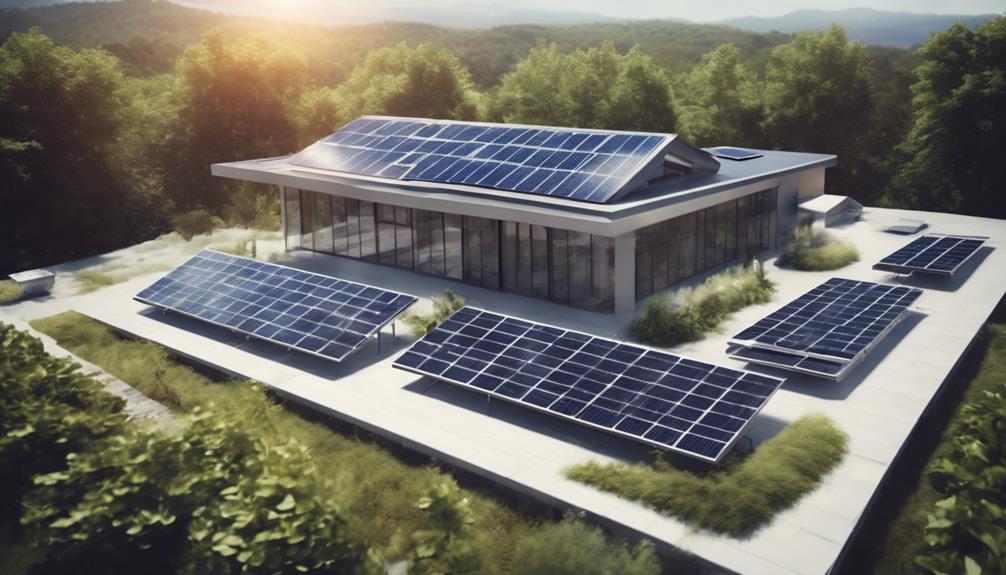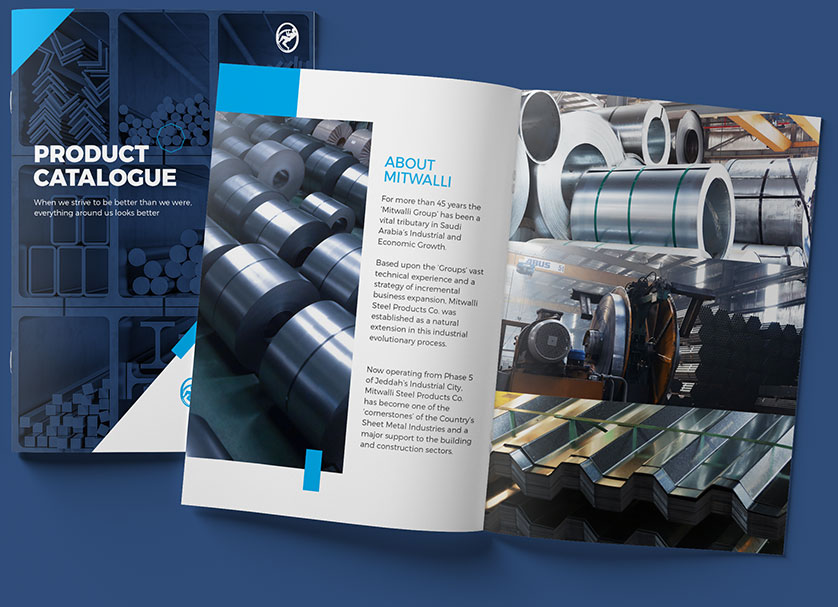
How to Optimize Your Building System Design?
Optimizing your building system design involves utilizing advanced simulation tools and machine learning algorithms to enhance energy efficiency and performance. By collaborating with leading institutions and analyzing existing control systems, you can identify optimization opportunities and implement enhancements with state-of-the-art technologies. Achieve peak energy efficiency through smart controls, high-efficiency HVAC systems, and real-time adjustments based on occupancy patterns. Focus on operational optimization and seamless operations to meet sustainability objectives. For a detailed guide on optimizing your building system design, explore the various strategies and advancements detailed in the research findings.
Key Takeaways
- Utilize advanced simulation tools for design optimization.
- Collaborate with leading institutions for cutting-edge solutions.
- Implement high-efficiency HVAC systems for energy savings.
- Integrate smart controls and sensors for real-time adjustments.
- Focus on passive design strategies and automation for efficiency.
Understanding Building System Optimization

Building System Optimization involves enhancing energy efficiency and performance through the utilization of advanced simulation tools and machine learning algorithms. By focusing on optimizing building system designs, researchers collaborate across leading institutions to advance expertise in building technologies.
These optimization methodologies primarily target residential building applications, aiming to meet sustainability and energy-saving objectives. The dissemination of findings from these research hubs, strategically located across the U.S., occurs through various publication channels.
Through the integration of diverse expertise and cutting-edge technologies, the field of building system optimization continually evolves, leading to the development of optimized designs that enhance efficiency and sustainability. This concerted effort drives the creation of innovative solutions that push the boundaries of traditional building practices, ultimately contributing to a more energy-efficient and environmentally friendly built environment.
Analyzing Existing Control Systems
Analyzing existing control systems involves a thorough evaluation of current building automation systems and controls within the building system. This assessment explores the data collection methods, fault detection capabilities, automation solutions, and overall system performance.
Understanding the functionality, integration points, and performance of existing control systems is vital for identifying optimization opportunities. Evaluating the effectiveness of diagnostics, reporting capabilities, and data storage solutions is key to pinpointing areas for improvement within the building system.
Identifying Optimization Opportunities

To uncover potential enhancements in building system performance, a thorough examination of technological components is essential for pinpointing optimization opportunities. When focusing on a precast building system, it is important to analyze specific areas such as high energy bills resulting from unscheduled events to gain insights for optimization.
Understanding the integration points within the building systems is crucial for effective optimization strategies. By identifying areas where optimization can lead to cost savings and increased efficiency, building managers can prioritize enhancements that offer the most significant benefits.
A deep understanding of each system involved is necessary to successfully implement optimization measures and guarantee seamless operations. By delving into the technological aspects of the precast building system and honing in on potential optimization opportunities, building owners and managers can pave the way for improved performance and sustainability in their building operations.
Implementing Building System Enhancements
Efficient implementation of building system enhancements is crucial for maximizing performance and sustainability in modern structures. To achieve this, consider partnering with a reputable building systems manufacturer to integrate cutting-edge technologies that optimize efficiency. Implement centralized data collection and reporting to enable fault detection and energy optimization, enhancing overall system efficiency.
Enhancing network speed through high-speed IP and fiber-optic installations can improve data transmission and system longevity, ensuring smooth operation. Utilizing machine learning algorithms for automation and controls enhances building performance and energy usage by enabling precise adjustments based on real-time data.
Collaborating with experts like Buildings IOT for HVAC, lighting, and power metering integration can lead to substantial energy savings and centralized reporting. Additionally, optimizing data storage solutions with dedicated servers and cloud-based options ensures thorough monitoring and operational efficiency. By incorporating these enhancements, buildings can operate at peak efficiency while reducing energy consumption and costs to a great extent.
Achieving Energy-Efficient Design

In the domain of contemporary building design, the emphasis shifts towards achieving peak energy efficiency through strategic integration of innovative technologies and design principles. Energy-efficient building designs have the potential to reduce energy consumption by up to 50% compared to conventional buildings.
By incorporating passive design strategies such as maximizing natural lighting and ventilation, significant reductions in energy usage can be achieved. Advanced building systems integration plays an essential role in optimizing operations and can lead to energy savings ranging from 15-30%.
Utilizing high-efficiency HVAC systems and equipment can further contribute to energy savings of up to 30%. Additionally, the implementation of smart controls and sensors enables real-time adjustments based on occupancy patterns, effectively reducing energy waste. Embracing energy-efficient design not only benefits the environment by reducing carbon footprints but also offers substantial cost savings for building owners in the long run.
The maximizing building system design is essential for achieving energy-efficient outcomes. By examining current control systems and pinpointing optimization opportunities, improvements can be made to enhance overall performance.
It is imperative to prioritize energy efficiency and sustainability in building design to decrease environmental impact and operating costs. Embracing building system optimization can result in long-term benefits for both the environment and the building occupants.
Frequently Asked Questions
How Can I Improve My BMS?
To improve your Building Management System (BMS), incorporate advanced diagnostics, utilize machine learning algorithms for optimization, enhance visibility with centralized data collection, prioritize big data analytics, and partner with experts for integration, ensuring efficient building management.
What is Building Optimizer?
A building optimizer is a sophisticated software system that utilizes advanced algorithms to enhance the performance and efficiency of building systems. It analyzes data from various components to automate control strategies and improve energy utilization.
What is Building Systems Design?
Building systems design encompasses the coordinated planning and integration of HVAC, electrical, plumbing, fire protection, and lighting systems within a building to guarantee peak performance and efficiency. It aims to create an integrated approach that promotes energy efficiency and occupant comfort.
What is the Design Process of the Building System?
The design process of a building system involves planning and coordinating HVAC, electrical, plumbing, fire protection, and lighting systems to make sure top performance. Early collaboration among architects, engineers, and stakeholders is essential for selecting compatible systems and coordinating design elements.

Add New Comment
Deprecated: File Theme without comments.php is deprecated since version 3.0.0 with no alternative available. Please include a comments.php template in your theme. in /home/wwwmsp/public_html/wp-includes/functions.php on line 6121